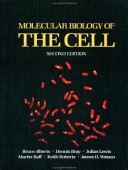How Plants and Animals Survive in Their Environment
Plants and animals are separated by about 1.5 billion years of evolutionary history. They have evolved their multicellular organization independently but using the same initial tool kit the set of genes inherited from their common unicellular eucaryotic ancestor. Most of the contrasts in their developmental strategies spring from two basic peculiarities of plants. First, they get their energy from sunlight, not by ingesting other organisms. This dictates a body plan different from that of animals. Second, their cells are encased in semirigid cell walls and cemented together, preventing them from moving as animal cells do. This dictates a different set of mechanisms for shaping the body and different developmental processes to cope with a changeable environment.
Animal development is largely buffered against environmental changes, and the embryo generates the same genetically determined body structure unaffected by external conditions. The development of most plants, by contrast, is dramatically influenced by the environment. Because they cannot match themselves to their environment by moving from place to place, plants adapt instead by altering the course of their development. Their strategy is opportunistic. A given type of organ a leaf, a flower, or a root, say can be produced from the fertilized egg by many different paths according to environmental cues. A begonia leaf pegged to the ground may sprout a root; the root may throw up a shoot; the shoot, given sunlight, may grow leaves and flowers.
Notes:
Animals spend energy to maintain an internally consistent state, while plants change their state in response to the environment.
Folksonomies: environment growth animals plants
Taxonomies:
/business and industrial (0.462112)
/health and fitness (0.437609)
/business and industrial/energy/renewable energy/solar energy (0.431939)
Keywords:
unicellular eucaryotic ancestor (0.997784 (neutral:0.000000)), internally consistent state (0.989646 (positive:0.545754)), initial tool kit (0.924588 (neutral:0.000000)), semirigid cell walls (0.887566 (neutral:0.000000)), different developmental processes (0.867869 (negative:-0.477232)), plants (0.689541 (positive:0.173785)), multicellular organization (0.677231 (neutral:0.000000)), basic peculiarities (0.665198 (neutral:0.000000)), evolutionary history (0.665142 (neutral:0.000000)), developmental strategies (0.639717 (neutral:0.000000)), begonia leaf (0.626861 (neutral:0.000000)), changeable environment (0.623112 (negative:-0.477232)), body plan (0.615962 (neutral:0.000000)), animal cells (0.608646 (negative:-0.438884)), environmental cues (0.608154 (neutral:0.000000)), external conditions (0.607675 (neutral:0.000000)), environmental changes (0.601277 (neutral:0.000000)), different paths (0.598464 (neutral:0.000000)), body structure (0.597601 (neutral:0.000000)), different set (0.592292 (negative:-0.477232)), Animal development (0.587105 (neutral:0.000000)), root (0.487103 (negative:-0.239650)), sunlight (0.470528 (neutral:0.000000)), animals (0.469882 (positive:0.545754)), energy (0.431140 (positive:0.545754)), shoot (0.422692 (negative:-0.239650)), contrasts (0.374095 (neutral:0.000000)), response (0.366212 (neutral:0.000000)), contrast (0.365304 (neutral:0.000000)), embryo (0.364773 (neutral:0.000000))
Entities:
1.5 billion years:Quantity (0.010000 (neutral:0.000000))
Concepts:
Organism (0.960766): dbpedia | freebase
Bacteria (0.902704): dbpedia | freebase | opencyc
Developmental biology (0.869165): dbpedia | freebase
Cell (0.832168): dbpedia | freebase
Embryo (0.787502): dbpedia | freebase | opencyc
Archaea (0.776294): dbpedia | freebase | yago
Eukaryote (0.767233): dbpedia | freebase | opencyc
Photosynthesis (0.752249): dbpedia | freebase

Triples
 Plants, Animals, and Internal States
Plants, Animals, and Internal States
Constant and Free Life > Additional Support/Evidence > How Plants and Animals Survive in Their EnvironmentAnimals are free thanks to their ability to carry a constant state within them, while plants must grow as their environment allows.




